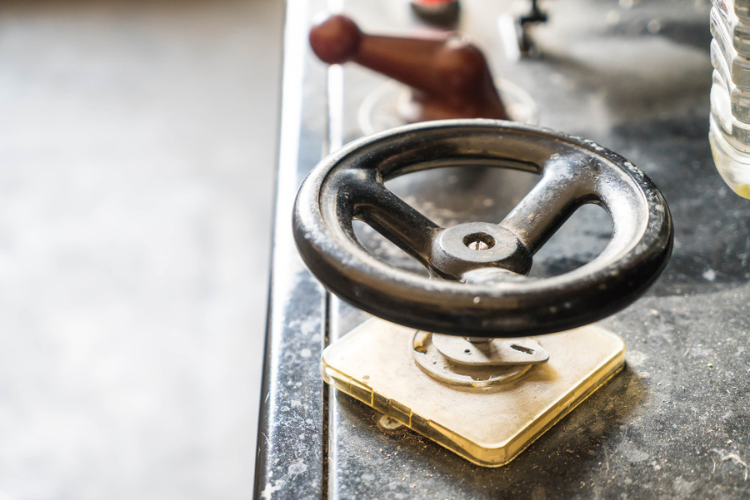Table Of Contents
Key Points to Consider When Adding Butterfly Valves with Pneumatic Actuators to Your Projects
Last Updated on: August 20th, 2025
Butterfly valves with pneumatic actuators can really level up a system’s control and efficiency… but let’s be honest, it’s not like snapping LEGO pieces together. There’s a bit more homework involved.
Good installs usually boil down to planning, timing, and actually understanding the space those parts will be working in. If you’re in manufacturing, utilities, or pretty much any heavy-duty industry, these are the things worth thinking about before diving in.
Butterfly Valves And Pneumatic Actuators: The Basics
Alright, quick refresher. A butterfly valve is basically a pipe with a spinning disc inside—turn the disc, and you control whether fluid passes through or not. Simple enough. Because the disc moves fast, people love these in pipelines where you need a quick shut-off or flow changes.
Now, throw a pneumatic actuator on top. That’s just a cylinder running on compressed air, pushing or pulling the valve disc so you don’t have to do it by hand.
Suddenly, you can open or close valves remotely. Handy if you’re running something big like a chemical plant… or even just keeping irrigation running without babysitting it.
But (and here’s the trap a lot of folks fall into) it’s not just about attaching one to the other. You’ve got to think about pressure, actuator sizing, pipe layout, and even the quality of the air running it. If you nail those details? You’ll get quick cycles, precision, and fewer tired operators.
Miss them? Yeah, you’ll be spending your weekend fixing leaks and wondering why nothing lines up. Moral of the story: check your system specs first. Always.
Choosing The Correct Butterfly Valve
So, you’ve decided to go with the valve–actuator combo. Next question: Which valve? Not all butterfly valves are built the same.
Ask yourself:
- How hot’s the pipeline gonna get?
- Is the fluid nasty—corrosive, abrasive, or just water?
- What kind of pressure are we talking about at peak load?
Answer those, and the picture gets clearer. Maybe you’re fine with PVC for a budget water system. Or maybe you need cast iron to stand up to steam. The point is, matching materials and design to the job is everything. Pick wrong here and the whole setup’s shaky.
A Quick Guide To Choosing The Right Butterfly Valve And Actuator
Here are some of the key features of a butterfly valve that you need to check before you choose one.
Material Compatibility
Every fluid has its quirks. If you try running something like hydrogen peroxide through the wrong alloy, you’ll be back ordering parts before you know it. Pick materials that can actually survive what’s flowing through.
Size And Pressure Rating
Don’t just check if it fits the pipe. Check if it can handle the pressure. Lower-rated valves might be fine for light-duty stuff, but they’ll fold in heavy setups.
Temperature Resistance
Heat kills valves fast. If temperatures run extremely high, get one made from specialty alloys. Specs usually list temp ranges—stick with those.
Picking The Right Pneumatic Actuator
The actuator is the muscle here. A perfect valve still won’t behave if the actuator’s wrong. Some actuators move by carefully venting air, while others use servo motors for feedback.
The trick is picking one that gives the torque and speed your system actually needs—not just whatever’s cheapest on the shelf.
Key Considerations
There are certain things that you need to consider while picking the right pneumatic actuator.
- Operating Pressure and Air Supply: Match your actuator to your system’s pressure and flow numbers. Go too high or too low, and you’ll see leaks, laggy movement, or outright failure.
- Speed and Response Time: Some jobs need lightning-fast valve action. Others need slow, steady control. Speed’s great, but not if it messes up precision. Balance both.
Integration With Control Systems
Hardware’s one thing, but sooner or later you’ve got to think about how it’ll “talk” to the brain of the system. Modern automation’s about data, timing, feedback—not just moving parts.
Control Compatibility
Check that the actuator and valve in your control system (PLC, DCS, whatever you’re using) can actually communicate. Inputs and outputs should line up. If not? You’ll either hack a messy workaround or watch the whole thing flop. Neither’s fun.
Maintenance Tips For High-Temp And Harsh-Chemical Systems
High temperatures and aggressive chemicals are brutal on equipment. You’ll want to baby those moving parts a little. Clean off debris, dirt, and random junk that collects.
Keep it lubed—with grease that actually matches your system’s heat and chemistry. A little bit of TLC now saves big repairs later.
Keep Spare Parts Handy
Production downtime because of a $3 seal? Painful. Keep a small stash of spares—gaskets, seals, maybe even an actuator if it’s mission-critical. Just make sure they’re the right spec for your setup. Nothing worse than pulling the wrong part off the shelf.
Thinking Beyond The Purchase Price
Here’s where lots of teams slip: they see the price tag and stop there. But valves with actuators aren’t a one-and-done deal—it’s an investment. You’ve gotta think longer term: maintenance, reliability, energy savings.
Cost Boxes To Tick
Here are some of the cost boxes that you need to check while you are purchasing.
Initial Purchase
Prices swing a ton based on pipe size, material, and brand. Cheap imports might look tempting, but they usually die faster. Brands with a solid track record usually end up cheaper in the long run.
Installation Costs
Pneumatics are usually easier to maintain later, but setup can take longer. Running airlines safely, training techs—it all adds hours. Budget for that in year one.
Why Choose A Pneumatic Actuator For Your Butterfly Valve?
From an energy standpoint, pneumatics often win the race. If you’ve already got compressed air in the plant, hooking an actuator into that line saves money compared to stretching your electrical system. Over time, those savings stack up.
More Than Just Savings
Pneumatics also cut down on manual tweaks. Fewer moving parts means fewer things for people to mess up, which translates to less downtime. And because wear happens more slowly, you’re not swapping parts every few weeks.
Performance You Can Count On
Need precise control? A butterfly valve with the right pneumatic actuator nails it. Smooth, predictable movement keeps production steady, customers happy, and downtime minimal.
Look At The Bigger Picture
At the end of the day, success isn’t just picking good hardware—it’s about making sure all the pieces fit the bigger picture.
Check the sizing, control logic, and maintenance needs before placing that order. Do it right, and you’ll end up with a system that runs smoother, lasts longer, and saves money.
Whether it’s wastewater plants, boiler rooms, or any industrial setup, paying attention to these little details of butterfly valves keeps your valve-and-actuator combo running day in, day out.
Read More:














